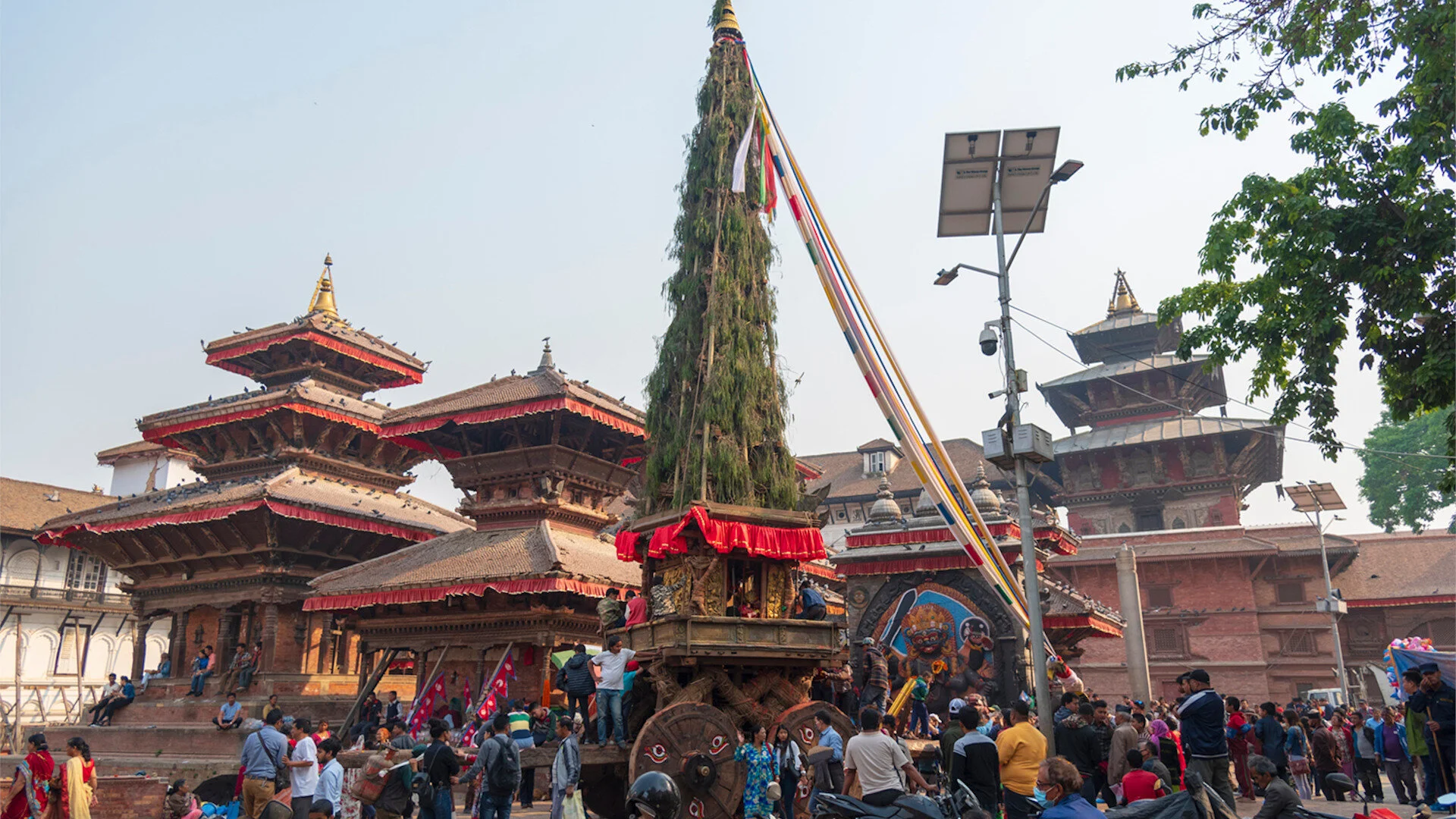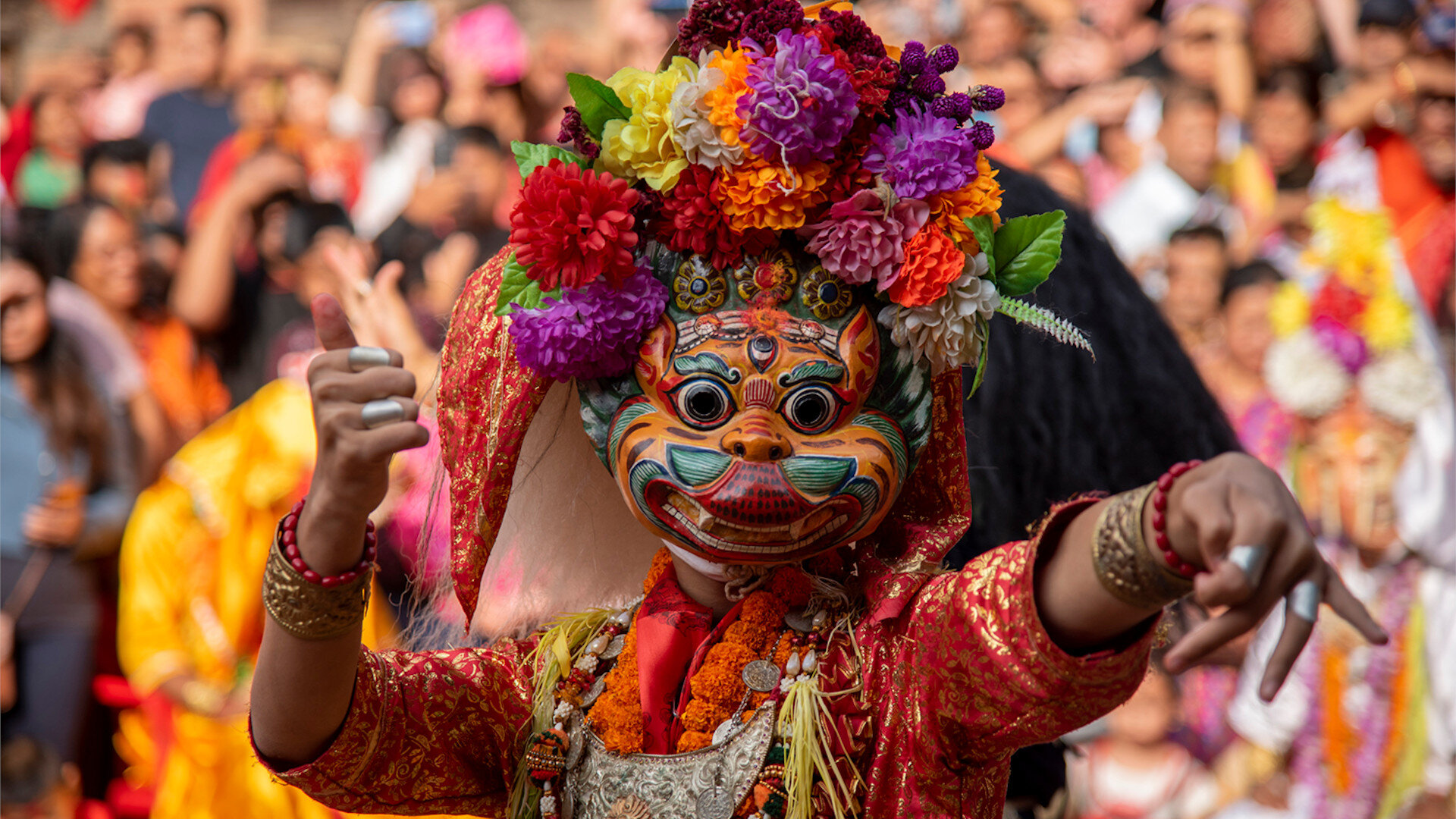As I write this, all the factories and workshops and wherever mechanical implements are used in Nepal are festooned with colorful pennants. Owners and workers alike are enjoying a holiday to commemorate Viswakarma, the divine architect and carpenter, one of whose major achievements was the creation of Dwarka city, the birthplace of Lord Krishna, and who is credited with designing and making numerous weapons for the gods of the Hindu pantheon. A statue of the god is installed in the above-mentioned establishments and homage is paid with worship and offerings. This festival is known as Viswakarma Puja.
This day, too, women are flocking to temples to cleanse themselves of any sins committed, consciously or unconsciously, during the year, by worshipping the Sapta Rishis (seven powerful sages; namely, Atri, Bharadvaja, Gautama, Jamadagni, Kasyapa, Vashishta, and Vishwamitra), whose figures are made using cow dung. This day is known as Rishi Panchami, and it is the culmination of the Teej festival that was observed with great joy over the last three days. The women take a purification bath before sunrise in a sacred river such as the Bagmati. In Kathmandu, the focal point is a particular temple in Teku, where a fair is also held on the day. According to tradition, the women are supposed to scrub themselves with mud from beneath an elephant’s foot, along with roots of the tulsi and amala plants. Teeth are brushed vigorously with the stem of an herbal tree (datiyon), and leaves of this tree are also part of the offerings to the sages.
Now, to add to the festive air, the powers-that-be have requested all the countrymen and women to observe the promulgation of the new Constitution on September 20 by lighting lamps in their homes. It’s also a holiday, as perhaps September 21 is too, when the government has planned all sorts of celebratory events. Only thing is, they might be limited to only some parts of the country, the Terai and many other parts having declared September 20 as a ‘Black Day’, and calling for the people to observe a total blackout in their homes. All in all, the following week will be a very interesting week indeed!
Whatever happens in the coming days, no matter who lights lamps and who observes a blackout, all this will probably not dampen the expectancy of all towards the coming month, when the biggest festival of the country, Dashain, will be celebrated from Oct 13 to Oct 27. In fact, most people will have already started planning for it, beginning this month itself, since for many there’s a lot of travel involved. The major highlight of Dashain is that it brings families together, even if it’s just for a few days. People, no matter where they are, make it a point to visit their ancestral homes to celebrate this great festival with their families.
Dashain lasts for 14 days, beginning with Ghatasthapna on Oct 13, when barley seeds are sown in sand-filled earthen pots in all Hindu household puja rooms. The sand will be brought from nearby riverbanks. A thick-wicked lamp is lighted, as well, and the lamp holder is filled with oil continuously to ensure that it remains lighted for the duration of the lengthy festival. Unlike at other times, when women do the daily puja, during Dashain, a male member does the needful for the period. The barley seeds will sprout into lovely yellow leaves (jamara), which have a significant role on the main day of Dashain, that is, Viajaya Dashami on the tenth day.
The first nine days are known as Navaratri (nava: nine and ratri: night). People wake up early all nine days to visit all the temples dedicated to Goddess Durga and her various incarnations. In all homes, families have hearty meals that include plenty of meat dishes. The seventh day is called Phulpati; it is when jamara is brought in from Gorkha to Kathmandu in a palanquin, escorted by -musket carrying soldiers. This ritual apparently has royal tones, since Gorkha is from where its king, Prithvi Narayan Shah, set out to unify the country. The eighth day (Oct 21) is Maha Asthami, when hundreds of thousands of buffaloes, goats, ducks, and pigeons are sacrificed in Durga temples throughout the country. Young men vie to test their mettle by slicing the necks of buffaloes and goats with a single slice of the khukuri. The night is called Kal Ratri (black night).
The next days is Maha Nawami. It is when soldiers of the Nepal Army perform their own sacrifices at the Hanuman Dhoka courtyard, with officers and foreign dignitaries in full regalia in attendance. The scene is all the livelier with the military band belting out vigorous tunes, and cannons blasting off salutary shots. The Taleju Temple nearby is also a focal point on this day, because its doors will be opened to the public on this particular day only. A lot of devotees will line up patiently for hours to get a rare darshan of Goddess Taleju.
The tenth day is the main day of Dashain. It is called Vijaya Dashami, as well as Tika. Family seniors will put tika (mix of vermillion powder, rice, and curd) on juniors’ foreheads, and offer sweets, fruits, and money, along with some jamara, which will be either put on the head, or behind the ear. After tika is over in their home, people will go visit all their relatives to put on tika and get blessings from elders. It is quite a hectic day, even if it is full of joy. Though it’s the last festival day, the coming four days are also observed as part of Dashain, these four days being used to complete visits to more relatives. The final two days are known as Kojagrat Brata (Oct 26), and Purnima (Oct 27), which is a full moon day, and the end of the greatest festival of Nepal.
Oh yes, there certainly is a festive air around the country, and people are certainly going to have a great time, regardless of the political shenanigans and the aftermath effects of the great earthquake of April 25, 2015.
POPULAR ITINERARIES
SIMILAR POSTS















